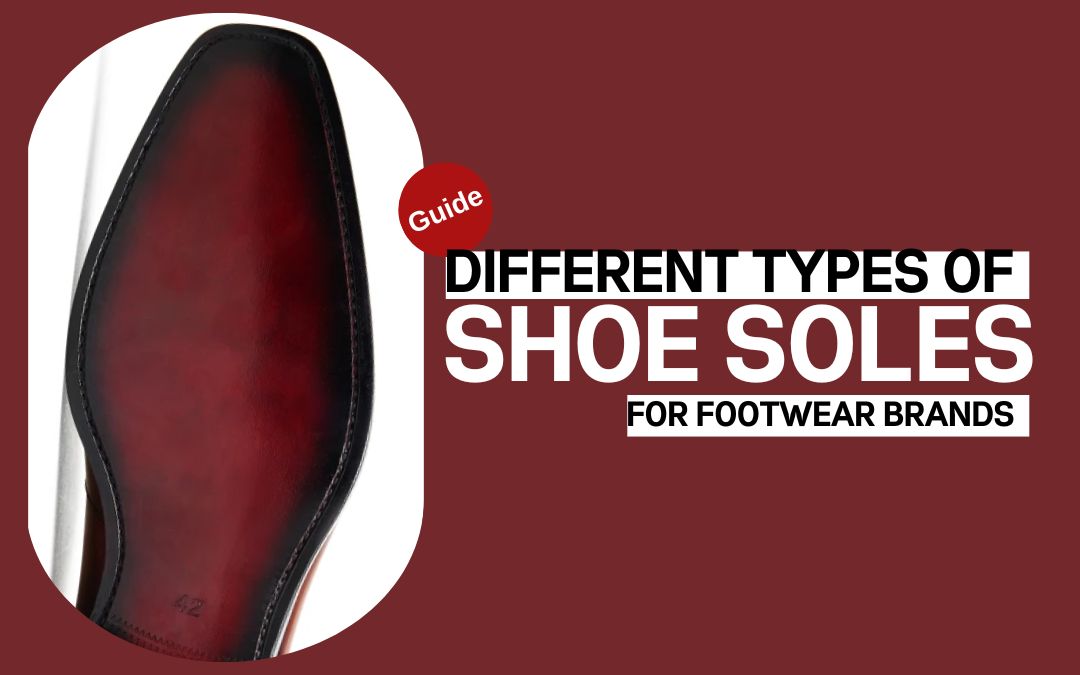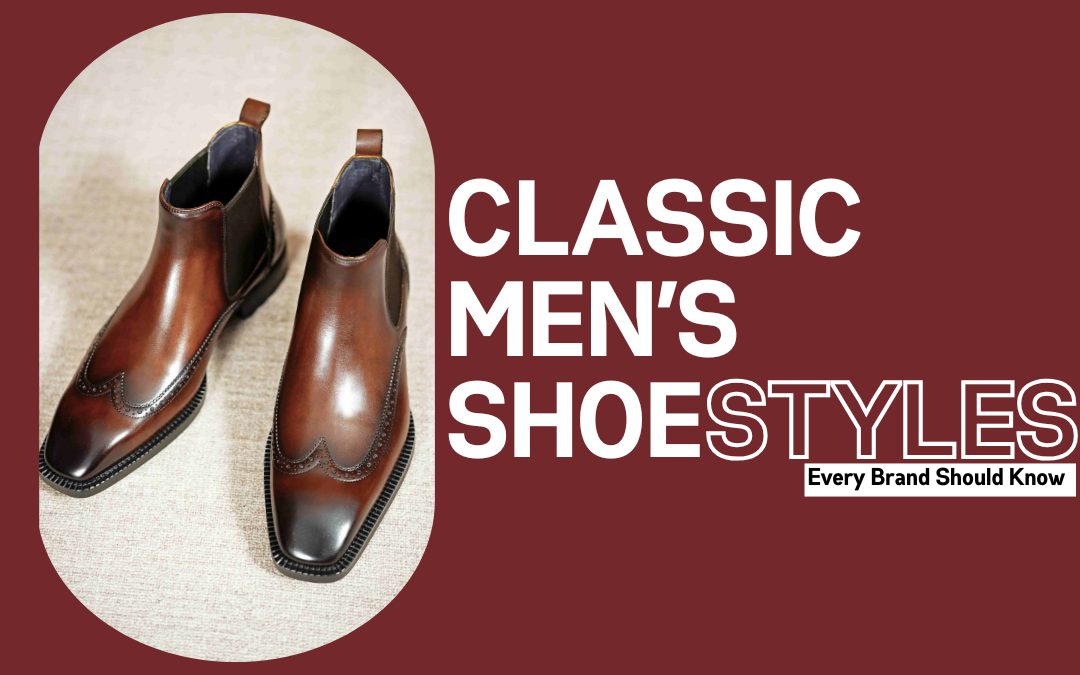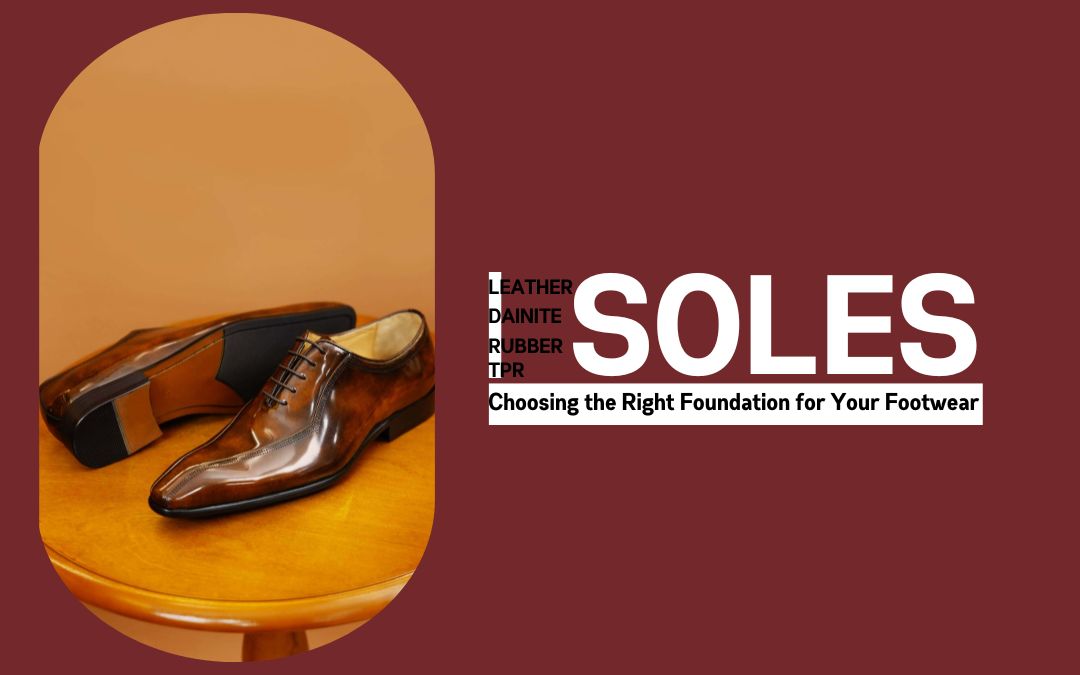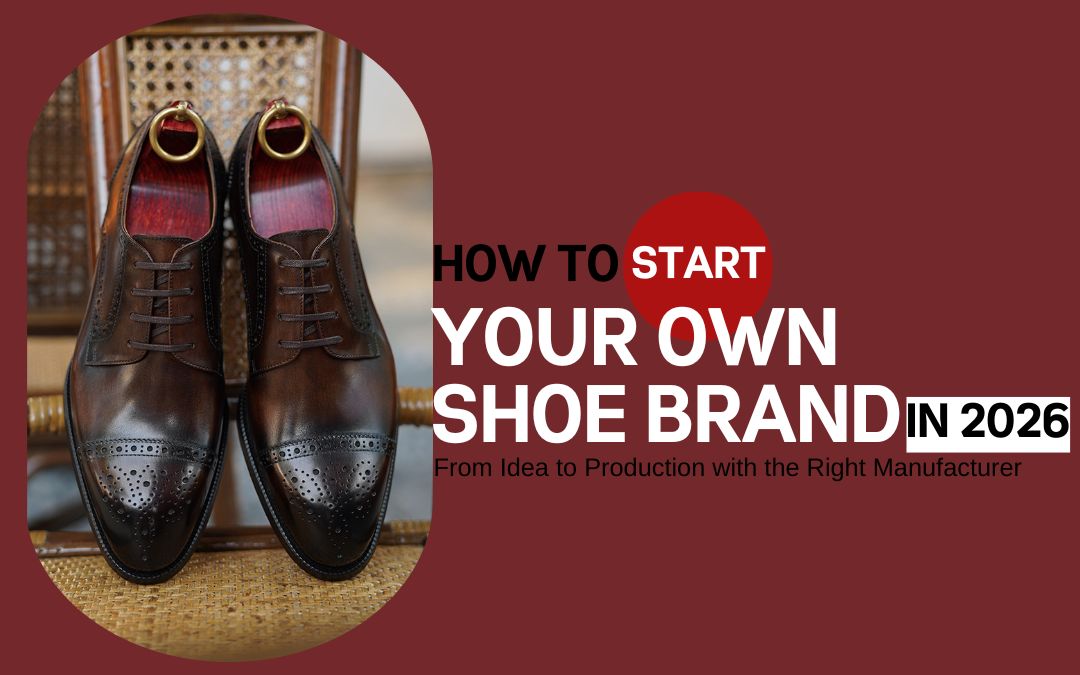Introduction: Why the Sole Defines the Soul of a Shoe
You know that moment when you slip on a new pair and take the first few steps across the showroom floor? That’s the sole introducing itself. It’s the handshake, the promise, the hidden architecture that decides whether your customer says “wow” or “meh.” Running late, the idea still stuck: the right shoe sole makes everything else work.
- The foundation of craftsmanship
The sole isn’t just the bottom. It’s comfort, durability, flexibility, and style rolled into one—your shoe’s personality from the ground up. - Why choosing the right sole matters for brands
If you’re building a private-label or small footwear line, picking the right sole is how you align your design with function and your audience’s lifestyle. Urban commuters? Outdoor-minded customers? Boardroom regulars? The sole sets the tone—and the expectations. - Brief introduction of Hengxin
With 14+ years specializing in premium men’s leather dress shoes, Hengxin blends traditional Goodyear welt techniques with modern design and patina artistry, partnering with global brands on OEM/ODM projects. Their focus on hand-finished details and resolable construction is tailor-made for labels that want longevity and a luxury feel.
Understanding the Structure of a Shoe Sole
Think of a shoe like a tiny building. The upper is the facade, but the structure—your outsole/midsole/insole stack—does the heavy lifting.
- Outsole
The layer that touches the ground. It defines grip, abrasion resistance, and a lot of the shoe’s mood (sleek leather vs. studded rubber, for instance). - Midsole
The “suspension system.” Whether it’s leather, cork-filled space (in welted shoes), EVA foam, or a composite, the midsole governs cushioning, stability, and how the shoe feels over hours—not minutes. SATRA, the footwear testing authority, repeatedly emphasizes how midsole choices influence shock absorption, flexibility, and slip resistance performance. - Insole
The foot-facing comfort layer, coordinating breathability and support. Swap in different footbeds and you can subtly tune the feel without changing the upper.
Material and construction importance
- Material matters. Leather reads formal and elegant; rubber leans durable and all-weather; EVA and composites are featherweight and modern.
- In premium men’s shoes, Goodyear welt construction stitches a leather (or rubber) welt to the insole/upper, fills the cavity with cork, and then attaches the outsole to the welt—making resoling straightforward and extending life.
Bonus: Hengxin’s Goodyear welted lines lean into resolability and finishing details such as beveled, polished edges and hand-burnished heels—small things that big customers notice.
Types of Shoe Soles and Their Applications
Here’s a quick “choose-your-sole” snapshot before we go deeper.
| Sole Type | Feel | Look | Standout Strength | Best For |
| Leather | Firm at first, molds over time | Sleek, formal edge | Elegant silhouette, classic sound | Oxfords, Derbys, boardroom |
| Rubber (Dainite/Vibram/Commando) | Sure-footed, stable | From discreet to rugged | Traction, weather resistance | Urban, all-season, outdoor casual |
| Crepe (natural latex) | Cushy, quiet | Soft, matte | Flexible, laid-back vibe | Desert boots, heritage casual |
| EVA/Composite | Ultra-light, cushioned | Modern | Moldable, cost-efficient | Hybrid dress-sneakers, trend capsules |
| Combination/Hybrid | Balanced | Semi-formal | Elegance + practicality | Smart-casual ranges |
Leather Soles – The Classic Choice
- Features and benefits
Leather soles bring that dapper, razor-clean edge you want on Oxfords and Derbys. They start firm, then mold to the wearer—like a seat that breaks in perfectly. Many welted leather-soled shoes also sit on a bed of cork that conforms to the foot over time, enhancing comfort and longevity. - Ideal use
Premium dress shoes and custom collections where line, silhouette, and tradition all matter. - Hengxin’s expertise
Expect precise welt stitching, neat sole edges, and fully resolable builds—these are the details that carry the premium badge customers can feel underfoot. For the definitive example of quality, see the meticulous Goodyear welt craft and exquisite finishing touches present throughout their collection of premium leather oxford shoes. - A quick expert voice
“We make around 100,000 pairs of Goodyear welted shoes every year,” notes James Fox of Crockett & Jones—underscoring how resolable welted builds stay in service for the long haul.

Rubber Soles – Durability Meets Versatility
- Types of rubber soles
- Dainite studded: the discreet dress-friendly option that boosts grip without a heavy lug profile.
- Vibram lug/mini-lug: from mountain DNA to city sidewalks, with designs that increase surface area and traction.
- Commando-style: chunky, all-terrain attitude for boots and casual dress hybrids.
- Advantages
Traction and weather resistance headline the list—and with the right profile, rubber can still look sharp. Dainite highlights its studded sole’s ability to provide “comfort and grip in all conditions” without trapping dirt—great for city slush and quick wipe-downs. Vibram’s newer traction-lug designs aim for up to 25% improved traction by reshaping the lugs for more effective surface contact. - Applications
Best for brands targeting urban all-season lines, travel-friendly dress boots, and smart-casual capsules where customers expect grip on wet pavement and a modern mood. For context on Dainite’s manufacturing heritage and testing culture, see their overview and process notes (including SATRA ties). - Extra reading
For a quick look at recognized Vibram outsole styles (like the Mini-Lug and Christy wedge) in fashion/workwear, Heddels offers a solid primer.
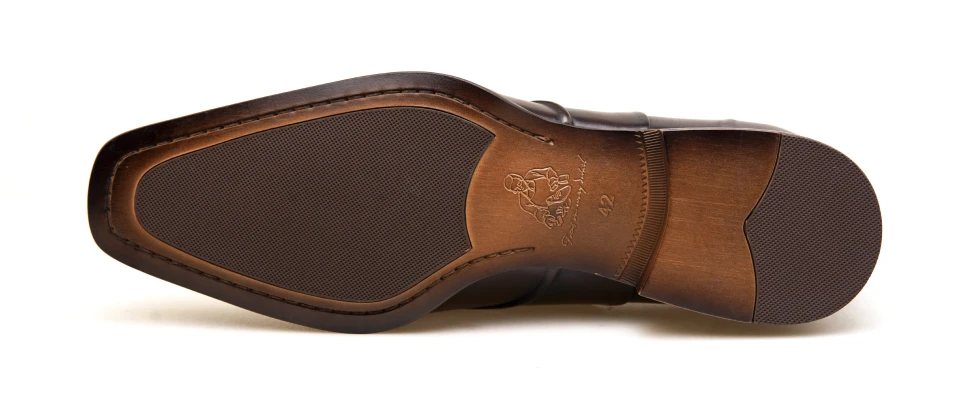
Crepe Soles – Soft, Flexible, and Contemporary
- Composition and texture
Crepe is natural latex rubber rolled into those distinctive, cushiony sheets. It’s famous on the Clarks Desert Boot and cherished for a cloud-like, quiet ride. - Style relevance
Crepe says “relaxed heritage.” Think desert boots, casual derbies, and off-duty staples, where you want whisper-soft footfalls, not boardroom crispness. - Real talk
Crepe soles are wonderfully soft but can scuff, pick up grime, and be less at-home in heavy rain or extreme temperatures. Many brands (and wearers) frame crepe as ideal for dry, mild-weather city use—pairing best with suede uppers and vintage-leaning fits.
EVA and Composite Soles – Lightweight Performance
- What makes them popular
EVA (ethylene-vinyl acetate) and similar composite foams are everywhere in performance and hybrid categories because they’re light, shock-absorbing, and easily molded into sleek profiles. Even big sports brands use EVA-based foams or successors for soft cushioning with a modern ride. - Benefits for manufacturers
EVA and composites are adaptable, cost-effective, and tooling-friendly—great for dress-sneaker crossovers or travel-friendly “all-day” dress shoes where weight matters. SATRA’s testing perspective on shock absorption and flexibility underscores why foam midsoles are a go-to for comfort-centric builds.
Combination Soles – Best of Both Worlds
- Why designers choose hybrids
A leather forepart for elegance and a rubber heel or insert for practicality gives customers the look they want and the traction they need. You’ll see this on semi-formal “weekday warriors” that must handle slick lobbies and rainy commutes without sacrificing a polished outline. - Example applications
Semi-formal collections that straddle classic and casual—your blazer-with-denim customer who wants confidence on wet sidewalks and a smart profile at dinner.
The Role of Craftsmanship in Sole Construction
Goodyear Welt: The Benchmark of Durability
- How it works
A leather (or rubber) welt is stitched to both the upper and the insole, creating a cavity that’s typically filled with cork. The outsole is then attached to the welt, not directly to the upper—making resoling and repairs cleaner and more repeatable. - Advantages for B2B brands
- Longer wear life with resoling options
- Premium positioning and higher perceived value
- Easier after-sales service (and sustainability messaging—repair, don’t replace)
As one industry piece noted, well-made welted footwear can be refreshed repeatedly, with the cork layer molding to the wearer’s foot over time.
- Hengxin’s specialization
Hengxin is among the early adopters of Goodyear welt techniques in China and focuses on repeatable quality at scale. Their finishing includes trimmed, beveled, and polished edges—details that elevate fit and finish for global private-label partners.
Finishing Excellence: Hand-Polishing and Patina Artistry
- Why finishing matters in luxury footwear
The sole edge, heel burnishing, and patina coloring do more than “look nice”—they tell a story of craftsmanship and make a product feel personal. Customers notice the difference in-hand and on-foot. - Unique craftsmanship at Hengxin
From carefully dressed edges to hand-painted patinas, Hengxin’s workshop brings artisanal nuance onto production lines—creating consistent, premium results while keeping the individuality that luxury buyers love.
Choosing the Right Sole for Your Brand
You might be wondering, “Okay, which one should we use?” Let’s map materials to market and identity.
- Matching material to market
- Formalwear brands → Leather soles for that sleek profile; consider closed-channel stitching for a refined outsole.
- Outdoor or casual lines → Rubber (Dainite, mini-lug, or commando-style) for grip and wet-weather confidence.
- Trend-focused collections → EVA or crepe for lightness and a contemporary or heritage-casual vibe, respectively.
- Balancing design, comfort, and brand identity
- Leather reads luxury and formality.
- Rubber signals utility and modern versatility.
- EVA/composites suggest innovation and lighter, “sneakerized” comfort.
- Crepe leans laid-back and artisanal.
- Custom OEM partnerships help you define your style DNA
Maybe your hero SKU is a cap-toe Oxford with a Dainite sole for all-weather wear. Or a hybrid dress-sneaker on EVA for travel. The right factory partner can prototype quickly, test compounds, and refine the stack-up so your line lands exactly where your customer lives. - Partnering with the right manufacturer
A skilled factory aligns design intent with technical feasibility. Hengxin supports brands with sample development, small-batch runs, and scalable premium manufacturing—linking patternmaking, lasting, welt construction, and finishing under one roof. Check out their Goodyear welt program and a classic Oxford silhouette as starting points for your line:- Goodyear Welt Shoes & Boots (process + options)
- RS10-K13 Classic Oxford (example style; rubber/leather outsole options)
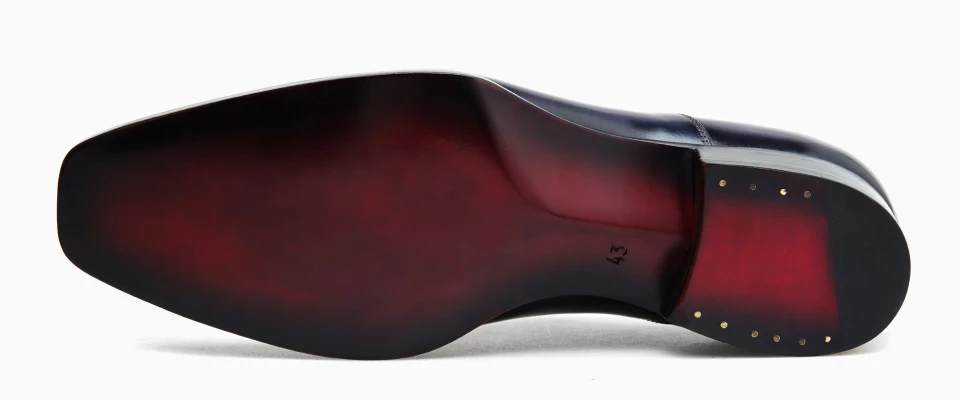
Conclusion: Build from the Ground Up
If uppers are the speech, soles are the stage. Pick the right platform and everything performs better—comfort, style, longevity, and even your brand story. For growing labels, mastering sole types turns guesswork into strategy: leather for presence, rubber for confidence, EVA for ease, crepe for charm. With deep know-how in Goodyear welt construction and hand-finished patinas, Hengxin partners with you to craft shoes that last, impress, and feel like “the good pair” every time you lace up.
FAQ
Q: What are the main types of shoe soles used in premium footwear?
A: Leather, rubber (Dainite/mini-lug/commando-style), crepe (natural latex), EVA/composites, and hybrid combinations (e.g., leather forepart + rubber heel). Leather leans formal; rubber adds traction; EVA brings lightness; crepe feels soft and casual.
Q: How can I tell if a leather sole is high quality?
A: Look for clean edge finishing, consistent beveling, and tidy channeling (often “closed channel” on high-end shoes so stitches aren’t exposed). In welted shoes, you’ll typically see a refined welt line and neat stitching. Brands like Carmina explain how closed channels elevate both appearance and durability.
Q: What is the difference between leather and rubber soles?
A: Leather gives you elegance and a sleek profile; rubber gives you traction, weather resistance, and a modern or rugged look—especially with Dainite studs or Vibram lug patterns engineered for grip.
Q: Are Goodyear welted soles more durable than cemented ones?
A: Welted shoes are prized because the outsole is attached to the welt (not directly to the upper), so you can replace the outsole more cleanly and more often. That translates to longer useful life and better after-sales service options for your brand.
Q: What kind of sole is best for formal shoes?
A: Leather soles still set the standard for formality. If your customers face wet sidewalks, pair a formal upper with a discreet studded rubber sole to keep the look sharp and the footing sure.

